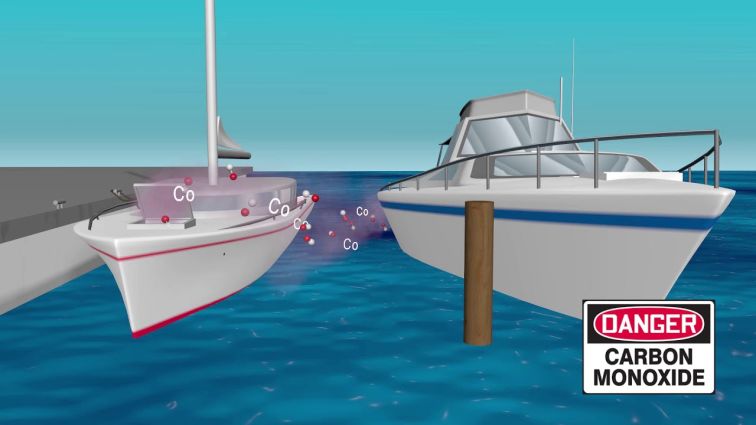Carbon monoxide and gas leaks on vessels
Gas leaks can be toxic to people and cause explosions and fire. Here's how to prevent and manage gas emissions on boats and other vessels.
Dangers of gas emissions
Engines, generators and cooking appliances on a vessel can produce toxic gas emissions. These gases can harm people on board.
Carbon monoxide poisoning
Carbon monoxide is a colourless and odourless gas. It's produced when a carbon-based fuel – such as petrol, diesel, propane, charcoal or oil – burns. Engines, generators and fuel-burning cooking equipment can produce carbon monoxide.
Inhaling high concentrations of carbon monoxide can cause death within minutes.
Symptoms of carbon monoxide poisoning include:
- irritated eyes
- headaches
- nausea
- dizziness.
Carbon monoxide poisoning can be mistaken for seasickness or intoxication. This means someone who's poisoned may not receive the medical attention they need.
Carbon monoxide can enter your vessel's cabin and cause poisoning from backdrafting.

Carbon monoxide poisoning risk from backdrafting
There is also a carbon monoxide poisoning risk when boats moor together.

Carbon monoxide poisoning risk from mooring together
Liquefied Petroleum Gas (LPG)
LPG is a non-corrosive and clean-burning fuel used for appliances on boats. It has a strong smell. LPG is heavier than air and will flow downwards and gather in the bilge.
If LPG leaks on board your vessel, it can cause explosions and fire. Inhaling LPG can cause asphyxiation.
What to do
Be alert for any signs of carbon monoxide build-up or gas leakage – for example, passengers feeling ill or a strong smell of LPG. If you think this may have happened, you should:
- Stop the engine.
- Turn off cylinder valves and all appliances.
- Ventilate the area – use all equipment available, such as a bilge blower.
- Evacuate the area and move everyone into fresh air.
- Avoid using any electrical switches until the air is clear.
- Keep a close watch on anyone affected. Give oxygen if possible. If the person is not breathing, perform CPR until help arrives.
- Make a distress call on your marine radio and contact medical help.
Reduce the risk
- When using the engine, make sure the cabin and cockpit areas are well ventilated. Open windows and hatches, and roll up cockpit covers.
- Exhaust outlets should be vented away from living areas.
- Never sit on marlin boards or swim platforms when a powered vessel with a rear-vented exhaust system is underway or idling. If possible, avoid using these areas for a minimum of 15 minutes after the engine or generator has been switched off. This includes “teak surfing” (body surfing behind a vessel) as this can lead to rapid inhalation of carbon monoxide.
- Operate your vessel so that prevailing winds help disperse exhaust emissions.
- Be aware of onboard generators. Even when a boat is anchored or moored, generators still produce carbon monoxide. Never swim under swim platforms on houseboats.
- Install a carbon monoxide detector alarm in your boat.
- When towing a person, make sure they're a minimum of 7m behind your vessel.
- Regularly check your vessel’s exhaust system for signs of leaks – for example, rust, black streaking, water leaks or cracked fittings. Ensure that all exhaust clamps are in place and secure, and that exhaust hoses are in good working condition.
- Maintain your engine and exhaust systems. Organise regular inspections by trained technicians – poorly tuned engines generate more carbon monoxide.
- Avoid leaving your engine or generator running while your vessel is moored. Keep a minimum distance of 6m from other vessels when their engine or generator is running. Exhaust from other vessels can release carbon monoxide into your cabin or cockpit.
- Schedule regular maintenance inspections for your engine and exhaust system(s) with trained marine technicians.
- Have LPG cylinders, appliances and hoses installed, serviced and inspected by trained technicians.